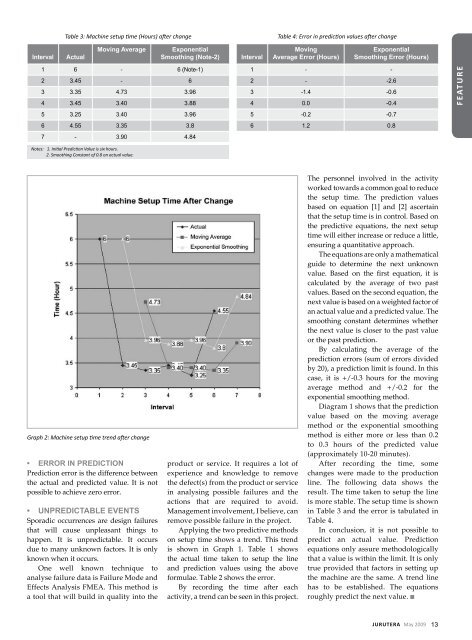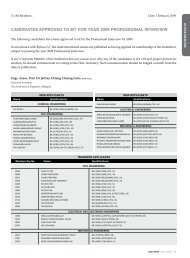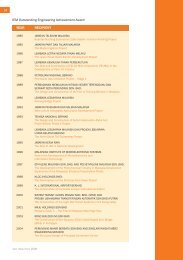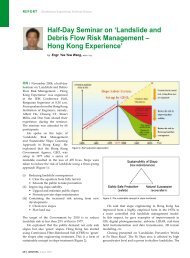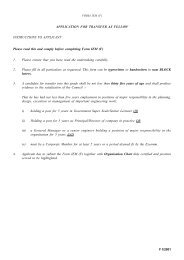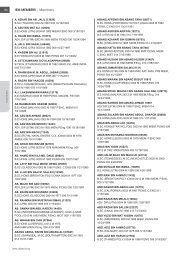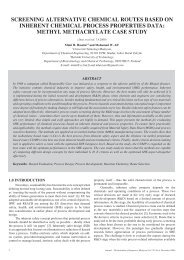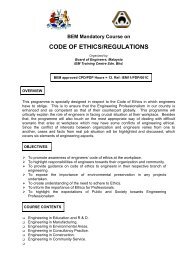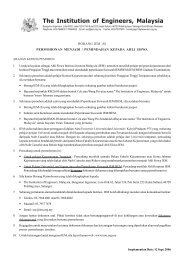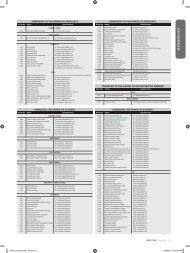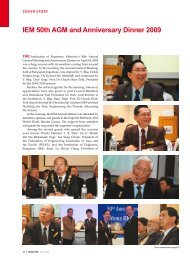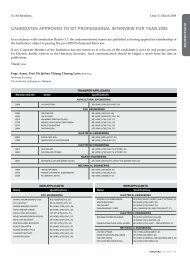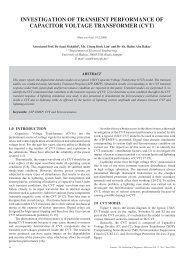candidates approved to sit professional interview for year 2009
candidates approved to sit professional interview for year 2009
candidates approved to sit professional interview for year 2009
Create successful ePaper yourself
Turn your PDF publications into a flip-book with our unique Google optimized e-Paper software.
Table 3: Machine setup time (Hours) after changeTable 4: Error in prediction values after changeIntervalActualMoving AverageExponentialSmoothing (Note-2)IntervalMovingAverage Error (Hours)ExponentialSmoothing Error (Hours)1 6 - 6 (Note-1)2 3.45 - 63 3.35 4.73 3.964 3.45 3.40 3.885 3.25 3.40 3.966 4.55 3.35 3.87 - 3.90 4.841 - -2 - -2.63 -1.4 -0.64 0.0 -0.45 -0.2 -0.76 1.2 0.8featureNotes: 1. Initial Prediction Value is six hours.2. Smoothing Constant of 0.8 on actual value.Graph 2: Machine setup time trend after change• Error in PredictionPrediction error is the difference betweenthe actual and predicted value. It is notpossible <strong>to</strong> achieve zero error.• Unpredictable EventsSporadic occurrences are design failuresthat will cause unpleasant things <strong>to</strong>happen. It is unpredictable. It occursdue <strong>to</strong> many unknown fac<strong>to</strong>rs. It is onlyknown when it occurs.One well known technique <strong>to</strong>analyse failure data is Failure Mode andEffects Analysis FMEA. This method isa <strong>to</strong>ol that will build in quality in<strong>to</strong> theproduct or service. It requires a lot ofexperience and knowledge <strong>to</strong> removethe defect(s) from the product or servicein analysing possible failures and theactions that are required <strong>to</strong> avoid.Management involvement, I believe, canremove possible failure in the project.Applying the two predictive methodson setup time shows a trend. This trendis shown in Graph 1. Table 1 showsthe actual time taken <strong>to</strong> setup the lineand prediction values using the above<strong>for</strong>mulae. Table 2 shows the error.By recording the time after eachactivity, a trend can be seen in this project.The personnel involved in the activityworked <strong>to</strong>wards a common goal <strong>to</strong> reducethe setup time. The prediction valuesbased on equation [1] and [2] ascertainthat the setup time is in control. Based onthe predictive equations, the next setuptime will either increase or reduce a little,ensuring a quantitative approach.The equations are only a mathematicalguide <strong>to</strong> determine the next unknownvalue. Based on the first equation, it iscalculated by the average of two pastvalues. Based on the second equation, thenext value is based on a weighted fac<strong>to</strong>r ofan actual value and a predicted value. Thesmoothing constant determines whetherthe next value is closer <strong>to</strong> the past valueor the past prediction.By calculating the average of theprediction errors (sum of errors dividedby 20), a prediction limit is found. In thiscase, it is +/-0.3 hours <strong>for</strong> the movingaverage method and +/-0.2 <strong>for</strong> theexponential smoothing method.Diagram 1 shows that the predictionvalue based on the moving averagemethod or the exponential smoothingmethod is either more or less than 0.2<strong>to</strong> 0.3 hours of the predicted value(approximately 10-20 minutes).After recording the time, somechanges were made <strong>to</strong> the productionline. The following data shows theresult. The time taken <strong>to</strong> setup the lineis more stable. The setup time is shownin Table 3 and the error is tabulated inTable 4.In conclusion, it is not possible <strong>to</strong>predict an actual value. Predictionequations only assure methodologicallythat a value is within the limit. It is onlytrue provided that fac<strong>to</strong>rs in setting upthe machine are the same. A trend linehas <strong>to</strong> be established. The equationsroughly predict the next value. nJurutera May <strong>2009</strong>13


